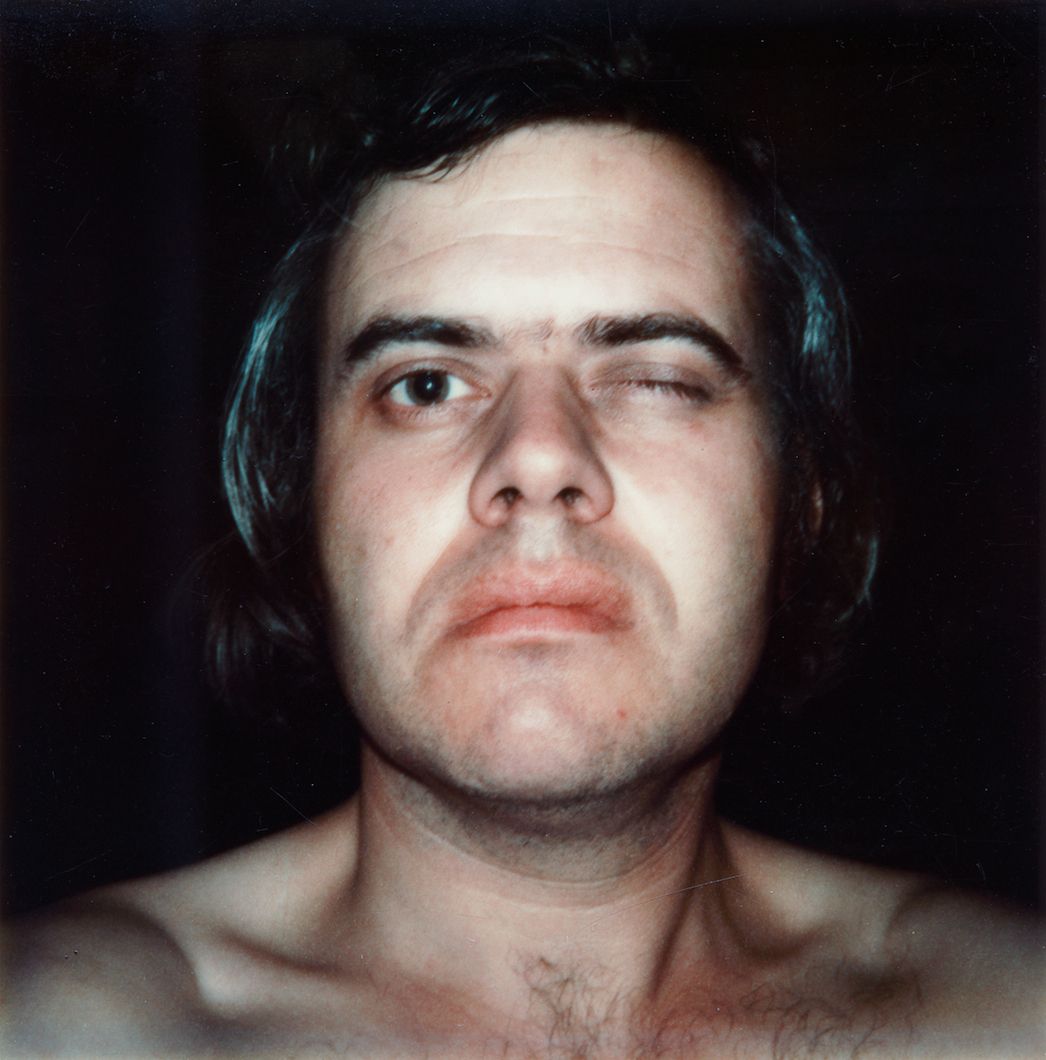J.W. ANDERSON in HD: A Journey Towards the Essence of Neo-Capitalism
|JACK SELF
As Jonathan Anderson steps down after 11 years as creative director at LOEWE, having transformed the Spanish leather house into a cultural icon, we’re republishing an interview with him, originally published in 032c Issue #30.
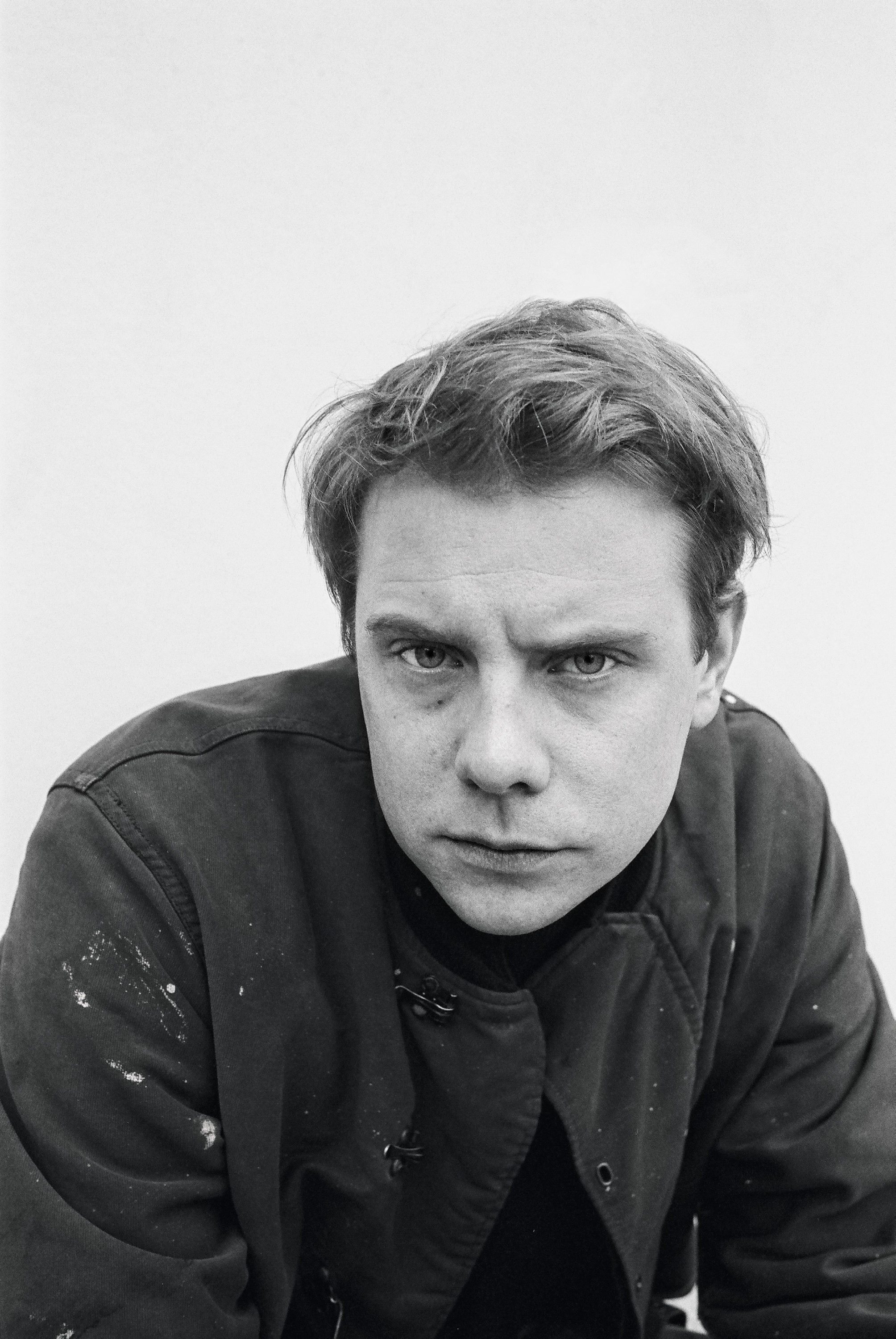
Jonathan Anderson portrait. Photography Max Farago
We are coming to the edge. We are beginning to lose it. We want our pre-Dot Com attention spans back. We want our pre-Crash economies back. We want to see the Twin Towers reconstituted on rewind – two stiff fingers suddenly raised, as if their crumbling facades in reverse could undo a decade of drone strikes, digital surveillance, death, and terrorism.
We feel atomized, disciplined to our screens and decoupled from our identities. We are irritable and isolated, increasingly unable to relate to each other or ourselves. All the while, our big data is blossoming in algorithmic feedback loops. At every moment, we are being analyzed, synthesized, extrapolated, and exploited. We watch in horror as machines remake us. We feel trapped in a circular production line.
We have become the product.
With immense and tireless energy, Jonathan William Anderson rails against every normative value and conventional assumption.
J.W. Anderson’s fuck you attitude is channelling a powerful anti-establishment sentiment. Within the world of fashion, there is a bubbling frustration now boiling into anger. A rejection of the status quo is just around the corner.
Do not be distracted by the recent rash of distressed irony: This lowest form of fashion humor is a fad. It is a saturated industry and its people are exhausted by the speed and volume of its newness. They are bored, but they know we cannot go backwards.
Anderson is a man driven by a radical refusal to compromise. He has turned skirts into masculine pieces (Men’s AW-13) and shrunken menswear down to women’s sizes. Every collection is an experiment. He is equally comfortable harnessing the spirit of 1980s Berlin punk (Women’s AW-15) as he is hyper-sexualizing the masculine form by live-streaming a runway show exclusively on Grindr (Men’s AW-16). He achieves all this while maintaining his own highly distinctive aesthetic. He is a canny businessman and a cultural colossus, one who refuses to be categorized or accepted.
“I can only operate within a system by being an outsider,” Anderson told me in a stone-cold deadpan.
In modern warfare, sheer firepower has been replaced by agility and mobility. Gone are the days when the biggest guns delivered victory. Today, power is determined by speed, not size. Victory means velocity. It means being less concerned with where you are, and more concerned with all the possible locations you could get to (and how fast). Anderson has harnessed this strategy of speed to execute a vicious campaign of shock and awe, culminating in a spectacular pincer move: He recently became the first designer to win the British Fashion Awards for both menswear and womenswear in the same year.
Anderson is typically described as being provocative, competitive, and daring. His tousled sandy hair and piercing blue eyes are a favorite with the press, while his razor-sharp wit keeps them on their toes. He is supremely cocky, with an animated interview style. When locked in debate, his arguments are wildly inconsistent yet convincing. He attributes this mercenary intellectualism to his profound doubt about the existence of truth.
“Only shit artists feel like they’re a big deal” – J.W. Anderson
After his British Fashion Awards sweepstakes, I asked him, “If you have to be an outsider, how is this underdog situation going to work, now that you’re dominating the mainstream?”
“Only shit artists feel like they’re a big deal”, Anderson replied, “Good artists never feel big. They know that to produce the best work, you can’t buy into yourself. Why? Because every time you achieve something, you subconsciously expand the goalposts. As you get better and better, your sense of what is needed to be truly great just gets bigger and bigger. This idea prevents you from ever becoming comfortable. The minute I feel comfortable, I can’t work anymore. The minute I feel that I’m liked in this industry, I don’t want to be liked.”
On the Monday after Paris Fashion Week, I interviewed Anderson at his house, a Victorian terrace in North London. From the outside, it is completely unremarkable, indistinguishable from the half a million or so identical properties in the British capital. It is impossible to guess at the rare antiques, objets d’art, and beautiful craft within that make up his personal collection.
The anonymous façade of the home is matched in Anderson’s clothes: He very rarely wears anything other than a crew neck jumper, white t-shirt, and blue jeans. I would call it his “trademark” look, except that there is nothing sufficiently distinctive about it to trademark.
“I don’t know if I feel comfortable enough to wear fashion,” he tells me, “When you’re working in fashion, you have to judge a look all the time. This means you have to judge a person: Is this person right for this look? I just can’t be bothered waking up in the morning and having to judge myself.”
He showed me into the front sitting room and gestured towards an uncomfortable straight-backed wooden chair – the kind I imagine Donald Judd would have admired. I began my interview by administering a Myers-Briggs personality test.
First question: “Do you feel superior to other people?”
Anderson sank back into his settee and gave me a guarded look. “I do,” he said, the blue light of his electric cigarette blazing. I sat opposite, unable to recline or even shift my position in the hard chair.
“Do you often spend time exploring unrealistic yet intriguing ideas?”
His eyes fell to the side table, a circular Georgian tilt-top with tripod legs. On it was an arrangement of small objects: grass and thistle in a vase, some brass rods, a plaster cast of a hand, and several glazed ceramic pots. The pièce de résistance, tilted away from the hand, looked to be an 18th century porcelain dildo.
He looked back to me and replied, “Yes.”
“You rarely worry about how your actions affect other people.”
“No. Never.”
“Do you feel as if you have to justify yourself to others?”
“Constantly.”
A gap in London’s fast-moving clouds threw a blade of sunlight across the room, illuminating his face.
“Your mood can change very quickly, and you’re often envious of others.”
“Yes, and yes.”
“Do you believe it is more rewarding to be liked than to be powerful?”
“I’d rather be powerful …”
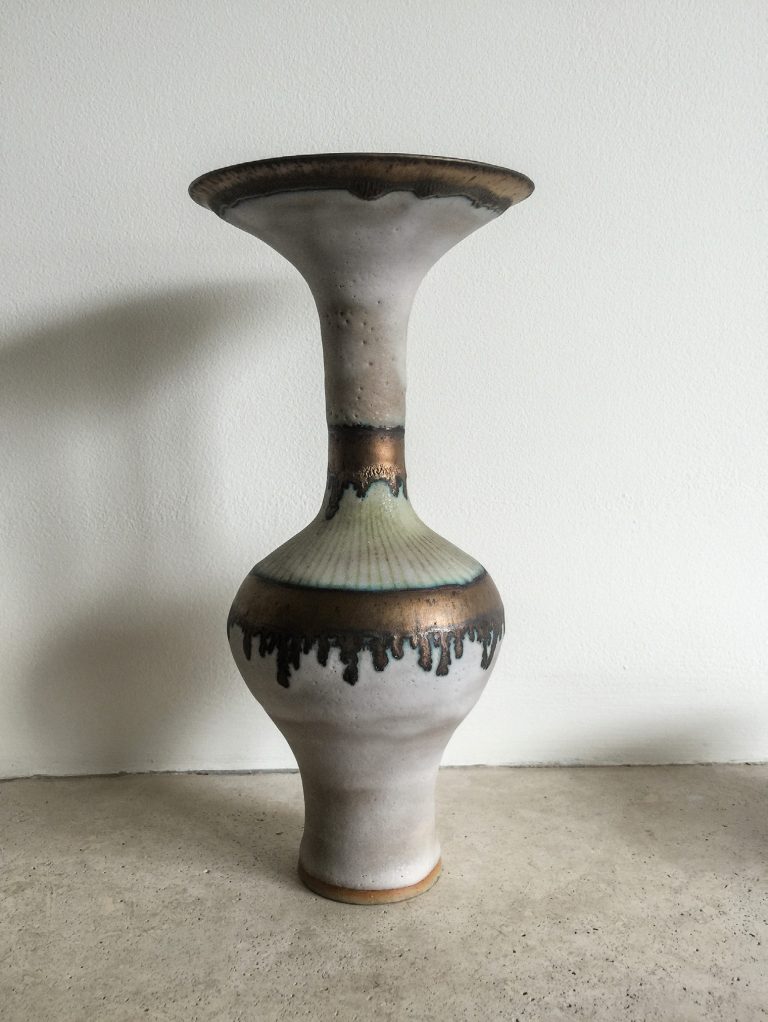
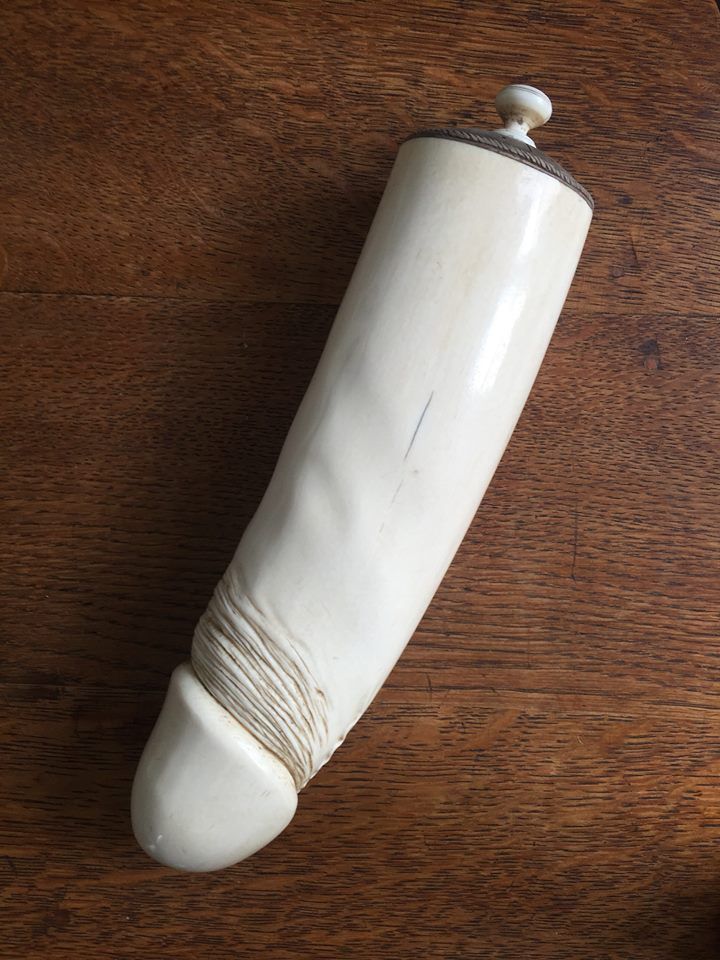
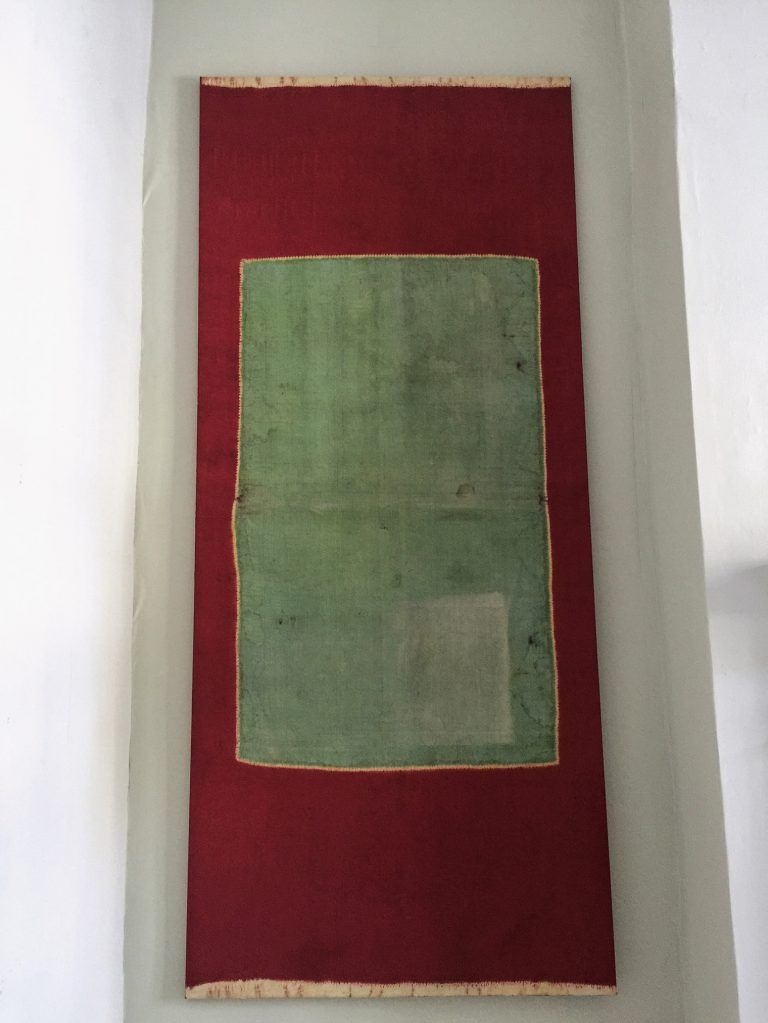
From top to bottom: a Lucie Rie flared-rim vase, dated circa 1980, a carved walrus-tusk phallus, an Indonesian marriage shawl, dated circa 1710
We broke off to briefly discuss artistic integrity, violence, and domination before continuing with the test. At last, I reached the final question: “Do you often contemplate the reasons for human existence?”
Anderson paused. “People sometimes ask me if I have a shrink. I have to tell them I do interviews instead. They’re literally the best therapy, and the most cathartic process. They make you stop, reflect, and digest. My only problem is that I always talk too much – today on this subject, next week on something completely different. I am always contradicting everything I’ve said before.”
The personality test results confirmed this: Anderson was an ENTP, a type identified as the “ultimate devil’s advocate.” This group combines their wide knowledge base and high-capacity lateral thinking with a quick wit to demolish any opposition. They refuse to accept the status quo, take pleasure in being the underdog, and hate day-to-day management. Interestingly, an ENTP will delight in flaunting the destroyed arguments of a rival – not in pursuit of some deeper purpose or strategic goal, but simply for fun.
“People sometimes ask me if I have a shrink. I have to tell them I do interviews instead.” – J.W. Anderson
Looking around the room, I began to notice how many objects were actually in the space. It was not immediately noticeable because they were clustered in discrete groups, more like exhibits in a museum than decorations in a home. Each surface became an opportunity for an isolated presentation: “I like to arrange objects into a code, so that they mean something together, or that there is a positioning. I think that’s interesting, when everything has a very precise curation.”
Apart from the circular table by the window, two gigantic Italian wine-press screws flanked the doorway, resembling gothic columns. Their tops were graced by precariously balanced pottery. “Even though I’m Irish at heart, I love British craft. I’m obsessed by craft actually, particularly Lucy Rie.”
“Why do you collect?”
“Collecting is ultimately a private thing. It’s not about showing. It’s about being personally challenged by objects you physically couldn’t make yourself, either because of the skill required, or their separation from you by time. That is the romantic idea of it.”
I gestured towards a striking painting of a vibrant rectangle on a colored background, before realizing the canvas was in fact a textile. “It’s an Indonesian shawl from Sumatra. It would have been given to a woman during her marriage ceremony.” It closely resembled a Rothko. “Yes. Usually they would have gold painted on them, though they’re tie-dyed technically, with wax. In essence, it’s just a rectangle on another rectangle, which is universal. It dates from 1710. I remember seeing this and being inspired for Loewe. I thought, ‘Wow, it’s amazing when such a modern object can pre-date modernity.’”
“Are you more influenced by objects, or by people?”
“I have been very influenced by objects. I will never forget the first time I went to Ibiza and I looked in a shop window, and it was the beginning of the world. You could buy a dog bowl, a yoga mat, underwear … It was all incredibly overpriced, but that only made you want it more. I feel like that was fundamentally what influenced me the most. It was about sheer consumerism. And that’s what changed: consumerism. When I look at the brands of my generation, it’s not about reinventing the wheel. It’s about re-contextualizing stuff that already exists to make it relevant today. People, for me, are a function. Is that awful? I curate people as much as I curate objects. I feel like, for example, the last Loewe show was about that. You’re curating an environment where you have a lamp, a mirror, a carpet, a razor blade. It’s all about how these objects perform together. And then into that space you insert people to generate a kind of energy. That’s central to my approach. I curate people to create tension. You need tension to get newness. You have to pair wrongs with rights, or make people who are stronger push the weaker.”
“This is the essence of neo-capitalism,” I said.
“People, for me, are a function. Is that awful? I curate people as much as I curate objects.” – J.W. Anderson
The current economy aims to foster competition between agents in a free market to drive innovation. In the long run, it leads to polarized societies with high levels of inequality. It used to be that those agents were at least autonomous individuals – they belonged to specific cultural and groups. You were either a mod, or a rocker, but not both. Around the time the playlist was invented, our souls got split apart by this process. The digital world allowed us to create avatars and multiple personas, where each one could sit in parallel with any number of others. This is why there is no contradiction in being an environmentalist day-trader, or an airline pilot who only eats organic, or a devout Catholic Marxist. Now we can be mods and rockers, since we are all punks with day jobs anyway.
The unique nature of an individual today is not about creating anything truly new. Rather, individuality is defined merely by the statistically singular arrangement of existing products. Through algorithms designed to analyze and predict our future preferences, even the supposed freedom of choosing our own music seems to be “recommended.” While appearing to increase our choices, this algorithmic filtering actually narrows our options in all spheres of life. Without autonomy, individuals cease to exist. Therefore, “curating people” seems to be more about harnessing their momentary context, shuffling their order and appearance, than taking interest in any intrinsic quality they might possess. It is not about who we are, but what role we can play.
“The minute I feel that I’m liked in this industry, I don’t want to be liked.” – J.W.Anderson
“As awful as that sounds, it’s probably true. All humans are consumers at the end of the day. No matter what level it is. So, as much as someone consumes from me, I consume from something else. It’s just a bypass of energy. This is different from newness, which is the production of unexpected combinations. It’s about re-inventing the proposition of how you confront two things. I think that’s what I’m good at and I think we live in a period where we curate everything. Instagram, for example, is a type of curating. I feel like I’m compelled to use it, and that’s of course why I dislike it. I am forced to do something when I’m on it. I hate that I’m controlled by something.”
“So why do you have the app? Are you addicted to the likes?”
“Not at all. I don’t need to be loved by a crowd. I don’t wake up in the morning and feel like I need to be approved by other people. That’s why I could never put a picture of my face up on Instagram. Because I would hate to wake up in the morning and feel like I only got 1,000 likes for my face, whereas someone else’s face got more likes than me. How depressing that must be for some people. How petrifying. I would hate to put a measure on how much I’m liked or not liked.”
“Does the quantification of the self have anything to do with our changing perception of gender or sexuality?”
“If I go onto Instagram and I look at images suggested to me – or if I just refresh and refresh – I can see more girls and more guys taking off their tops than ever before. In a weird way, the man has been forced to abandon his masculinity. I don’t want to generalize, but before mobile phones could take photos, it was mostly women who used disposable cameras on a night out. They loved being photographed, and it was about being seen and dressing up. Men didn’t have that. Instagram came along, and suddenly men could engage in this form of display, and it was very exciting for them.”
The ultra-leftist French collective Tiqqun wrote a book called Preliminary Materials for a Theory of the Young-Girl. In it, they say that it used to be only women who were made to embody consumerism. They reference the young, beautiful model on a billboard or in a magazine – the woman who exists only as a commodity, and whose image is traded. The term Tiqqun use is the “Young-Girl,” who is not always young, and who is more and more frequently not even female. “Has Instagram accelerated this moment of realization, in which men have discovered their bodies as commodities and have begun to treat themselves like commodities?”
“No …” Anderson reflected in silence, before adding, “But men do love being treated like commodities. They love it. And I feel like when that began to happen, it changed fashion permanently.”
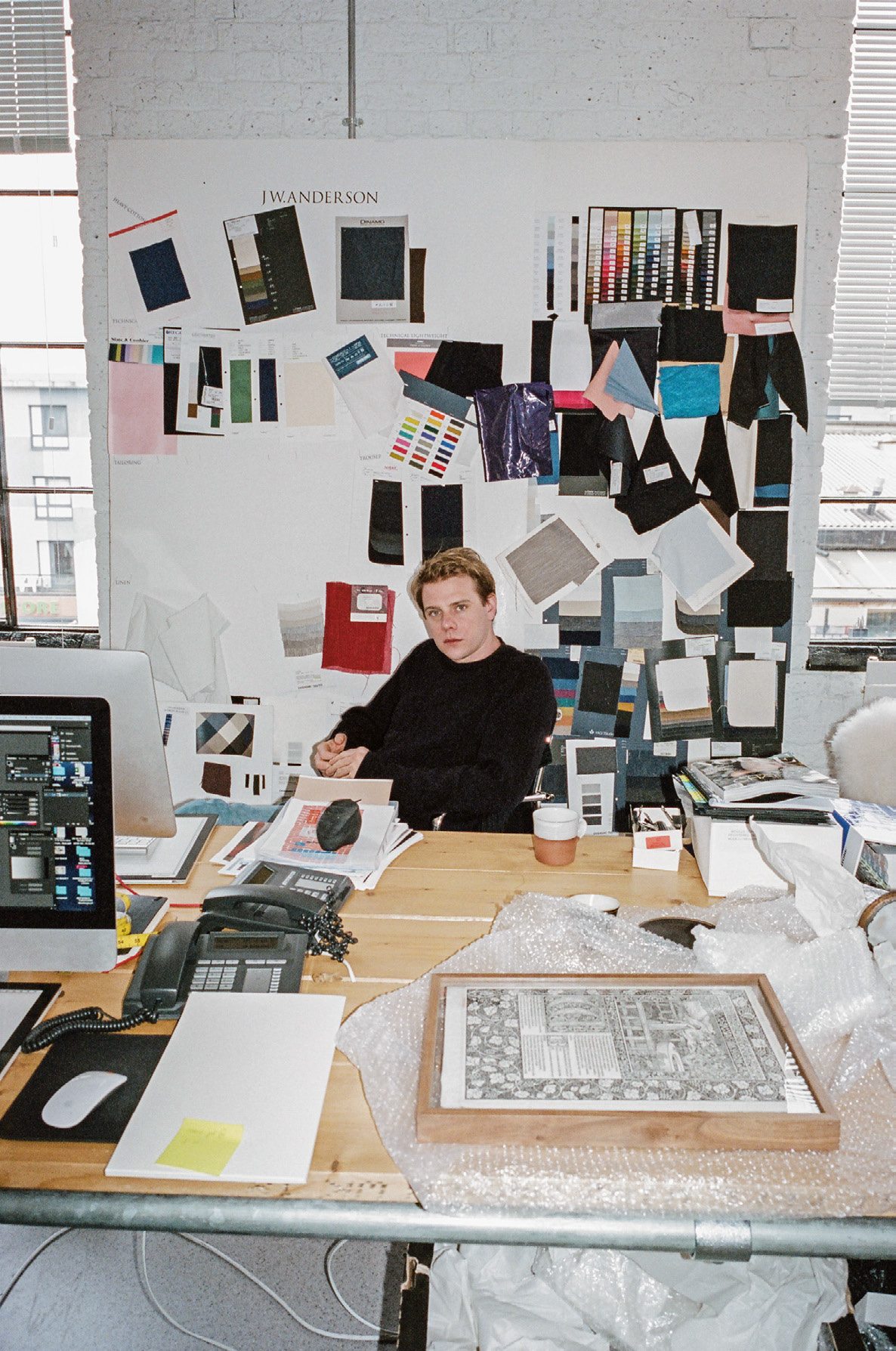
Jonathan Anderson shot in his studio. Photography Max Farago
“To concentrate on the question of gender, are you saying that what we think is a discussion about fluid gender is actually a process whereby all people are now being treated the same, as commodities, and voluntarily embracing it?”
Anderson skirted the issue, like he had done earlier when I pressed him on the details of his design process. I wanted to ask how his process focused on “input” – an ambiguous word that seemed to encompass many different kinds of reference material. I know Anderson amasses vast quantities of input, and that his employment, or re-deployment, of references can be extremely creative. He said, in passing: “I bought a vase recently because I was obsessed with its yellow. It was somehow at the limit of yellow, at a point when, under certain light, it almost wasn’t yellow at all. And I was like, ‘Could we make this color into leather?’ And we did. And it’s the most amazing thing to be able to take a three-dimensional material and translate it through an abstract quality into something else.”
The pastiche use of references has accelerated in fashion in recent years, and it is common to see direct reproductions of previous collections appearing on the catwalk with-out modification. The power to “translate” input is integral to Anderson’s process, but when I tried to drill him on it,
I came up against a wall. Perhaps he did not want to talk design with an architect, or gender with a journalist.
His response about whether we are now exploiting ourselves voluntarily was diplomatic: “Ultimately, human beings are all after one thing: to be loved by someone. They want to be loved by an individual. When you get it and you have that, what a social platform like Instagram does and encourages is to abandon that love.”
“It’s a call to emotional promiscuity,” I said, “It’s the false promise of something better out there, the myth of infinite and eternal options. The permanent deferral of binding decisions is endemic to our age.”
“Sure,” Anderson said, “You can be lured by a giant fantasy of a non-reality. That’s the world Instagram creates, and I hate that.”
Of course, a world in which men and women are both commodities has some equality to it, even on a dystopian level. They do not have identities beyond their operation as abstract vectors, produced and consumed at high speed (mostly through the image). Their appearance and disappearance is finely timed to coincide with a popular attention span – cultural memory and forgetfulness. Their power is determined by this speed of both attack and retreat.
“The reason I started doing womenswear was because our contact at Liberty liked some menswear t-shirts, so we just translated them into smaller sizes. They were already being worn by women anyway. But, when I look at why we ended up doing womenswear, it was simply to sell more clothes. And we approached it with the logic of not having to buy more material. It was just a very easy way to cut costs. It was never to do with gender, even though I have been seen as someone taking a position on it. I find gender incredibly boring in that way. I don’t think about gender at all.”
“But men do love to be treated like commodities. They love it. And I feel like when that began to happen, it changed fashion permanently.” – J.W.Anderson
Anderson looks me in the eye with such intense conviction that I become immediately aware he is lying for effect. (Those goddamn ENTP personality types.) I could feel myself being wound up as he tried to flip the interview. I want to agree that gender is not important to commercial uniformity, but I cannot accept that Anderson finds gender boring. I tried another tack: “What about sexuality? I mean, in the sense that one can talk about masculinity and femininity quite separately from questions of gender?”
“In Autumn/Winter 2013 we did a collection with ruffer shorts, and ruffled boots, and tops which were made out of duffle fabric, which is the most masculine and British material you can get. It was the best collection we ever did. I don’t care what people say. For me – inside me – when I look back at that collection, it did something. Because I felt like it didn’t compromise, and it was really arrogant as fuck. And I think that’s what was so important in that moment. It felt normal.”
“This argument about womenswear and menswear being driven by fabric volumes speaks about your attitude towards business models. At Loewe, you experimented with delivering the product into stores at the same time as the show, which is an increasingly common strategy. What you’re effectively trying to do is reduce the moment between when someone sees something and when they can own it.”
“Yes. In fashion, you’re going up against boredom. As the modern world continues to juggernaut forward, our attention spans get shorter. You see it on all levels. It’s terrifying. It is the most dangerous thing. It makes me want to protect certain things, particularly craft.” He gestures at a few of the many Lucie Rie works in the room. “This is important because my generation and the next one often feel like machines make everything. We have forgotten the idea of a human being, until we look at the news and we see a building fall on top of them. We need to remember the idea of craft. This is why, as much as I want to be radical, as much as I want to be new, there is something very humbling when I see things that I cannot make myself.”
“In fashion, you’re going up against boredom.” – J.W. Anderson
There is a paradox in architecture that relates closely to this: An architect draws a building, but never builds it; a builder makes the object, but does not design it per se. So who is ultimately the author? Fashion has the same problem – and Anderson does particularly. With his design technique of mass input and rapid editing, it is hard to say how much physical involvement he has with any object he authors. Is Anderson a craftsman? Or does he only know how to direct and edit? Only a designer with intense knowledge of leather and suede as materials could produce the Loewe “Puzzle Bag.” Yet how much he responds to artisanal experience and how much he directs it from afar remains unknown.
Smooth transactions and the bespoke obscurity of craft seem to be part of Anderson’s general attempt to innovate by avoiding the conventional. I continued with my questions: “At J.W. Anderson you famously turned down the idea of a flagship to create the ‘Workshop’ – a kind of cross between a miniature exhibition space and a very large wardrobe. It occupies a tiny shop below the Ace Hotel in Shoreditch, a rounded room dominated by an overblown vitrine. You never know if it is going to contain your clothes, or a collaboration, or any other kind of object. As a store, it is unpredictable and always changing. What sort of brand are you trying to create, and how does this approach reflect the contemporary?”
“I think, with J.W. Anderson, the idea of the Workshop is that opening a normal store in today’s world is just not relevant. People need so much entertainment, so a store has to be about giving them something new each month – something else to talk about. We’re living in a time when brands have to harpoon things towards themselves to enrich themselves.” Anderson’s hands reach out, acting a motion, and for a moment I imagine I am on the deck of a whaling ship in the high seas. “The younger the brand, the more you need to harpoon towards you. Because you’re trying to build its legacy, so you need more content. The more content you can build, the better.”
“Presumably this involves riding on other people’s reputations too? As with curation and newness – as the recontextualisation of the existing – reputation is increasingly based on association with other people and their reputations. It’s a fundamental shift from the past. And it also talks a lot more about the idea of cooperative or collaborative production.”
“I just feel that when you collaborate with other people, you find out things about yourself. But all these strategies make sense if they help our factories, if they help our people. If changing production or distribution is a PR trick, forget it, it will never work.”
“How do you stay true to your vision? How can you distinguish what is truly relevant from what might be one of these ‘PR tricks’?”
“I have no idea. Producing a collection is the most brutal experience. I just finished one straight month of fashion and I honestly have no idea where I am. I have no idea what the industry wants from me, what the business wants of me, what people expect. When I read reviews, I have no idea what they’re trying to say.”
“One of the things we discussed today is how you handle big data sets. This involves every aspect of design and production and communication with an audience, how you manage people as commodities. But we also talked about it in a purely creative sense, about how you amass vast quantities of information and then ruthlessly edit. Your mind is performing a unique operation of refinement, and my question is about how you approach the collection or a garment.”
“What the meaning is, I have no idea. Do I care? Not really. But when I look at it, at the moment it looks perfect.” – J.W. Anderson
“Every single thing that goes into the collection is about microscopic obsessions. As a human being and a creative, the best way to become non-formulaic is to work hard on your input, on your references. Every day you have to be open to like things you’ve never liked before. Every day you have to realize you can’t get too comfortable. It’s like that round table. The minute I get bored with it, or the arrangement on it, I have to add another object to it, to the point where it becomes a cake of objects. But in that cake there is a recipe and formula. If you were to strip it down, it would mean something. What the meaning is, I have no idea. Do I care? Not really. But when I look at it, at the moment it looks perfect. In about a week’s time though, there will have to be something else in the room. The same goes for the collection. Right up until the final moment, I will panic if there is something missing, something not causing a friction.
“Four days before Loewe AW-16, we made 35 chairs out of plastic boxes and filled them with 9000 Bic razors. I needed that color in the space to create tension between people and objects. I was thinking about what it could mean for an individual to sit on razor blades. What will people do when they see a person sitting on them? What will that discomfort do to the clothing? What will the people who engage directly with the show take away from the space? For me, the collection is an obsession of curating things into some sort of algorithm that does not make communicable sense. But it is personal – it’s really about me, and the people around me. That’s why I find it so annoying to do back-stage interviews, when you sit there and have to explain things. It means nothing. It really means nothing. And if you’re asked why it means nothing, it’s because each object means something. So the overall show doesn’t mean anything, while each individual thing means something specific.”
“Why do you fragment meaning in this way? Is there no truth to the whole collection?”
“There’s a commercial truth, which is about how you will consume it. You won’t ever experience a collection as a single thing, because no one buys 36 looks. But you might buy the cat necklace …”
“In the AW-16 womenswear collection for J.W. Anderson, you introduced domestic paneled walls between each row, with the effect that basically you can’t see a look until it’s within three meters of you. There is no easy image. You only can consume the details. This clearly relates to the idea that there is no meaning overall, but that it’s a series of sequential, focused details. How closely do you try to make these quite conceptual ideas manifest in space and design?”
“It is important. The way I look at fashion has changed my approach. Three years ago, I used to look at every collection and every look. Every. Single. Collection. Now, I only have to look at a collection through Instagram and I’ll never look at a full collection. It’s the best thing, because through Instagram you’ll only see the best and most important things.”
“You’re basically pre-filtering your exposure to fashion?”
Jonathan picked up his phone, slid to unlock, then idly swiped back and forth. “It’s basically using the masses like an algorithm.”
“That’s super hardcore,” I said.
“It doesn’t scare me. In a weird way, I hate the idea that people think fashion is about speed and data. And that everyone’s burning out from overload. No. That’s not what it’s about.”
Jonathan picked up his phone, slid to unlock, then idly swiped back and forth. “It’s basically using the masses like an algorithm.”
“So what’s the relevance of the speed?”
“There’s no relevance. It’s how you operate. It’s like crashing a car: It only happens when you take your eyes of the road. You can go as fast as you want in a car, but the moment you’re not focused, or there’s a fluke accident, it’s all over. What I’m saying is that there’s no speedometer to fashion. The industry is an autobahn. You can go as fast as you like.”
It’s easy to imagine fashion as the endless highway to hell, a road very rarely paved with good intentions. In the current moment, it is not at all evident that fashion even has a destination in mind. It is speed for the sake of speed – a force that drives towards acceleration, commodification, standardization, and subjugation.
Then I notice a fatal contradiction in Anderson’s argument. How can he tell me fashion is not about speed or data, while at the same time he is outpacing the competition by collecting more information and processing it with faster, more accurate algorithms? I can only assume that he is a Trojan Horse, an agent who is turning the very mechanisms of fashion back against themselves.
While we speak, Anderson is evasive and contradictory. He purposefully put me in an uncomfortable chair that could only look directly at him, forcing me to block out everything else. This confrontational energy is one that flows directly through his collections. He is the master of discomfort.
This article was taken from 032c Issue #30: “NO FEAR.”
Credits
- Text: JACK SELF
- Portraits: MAX FARAGO
